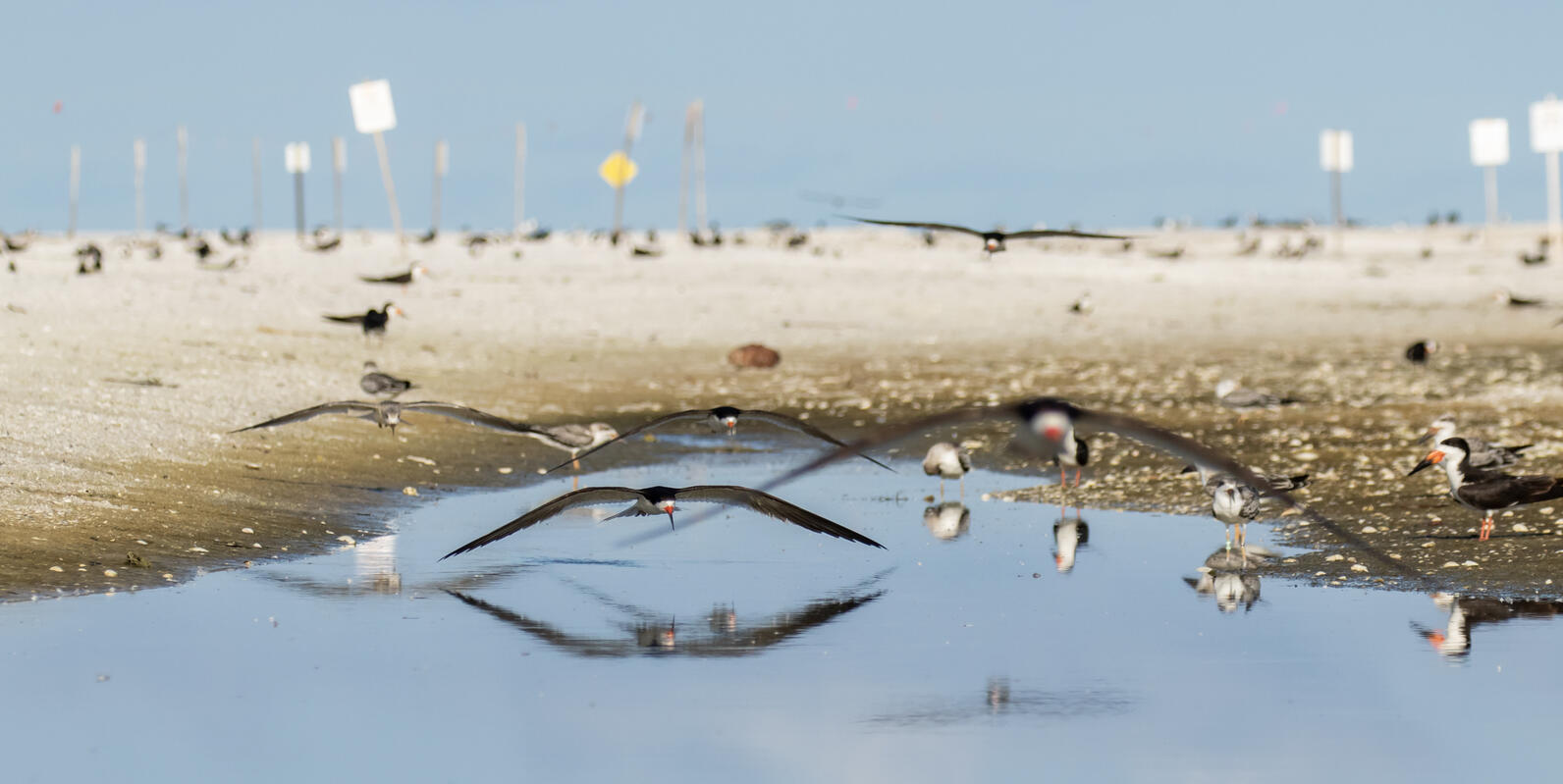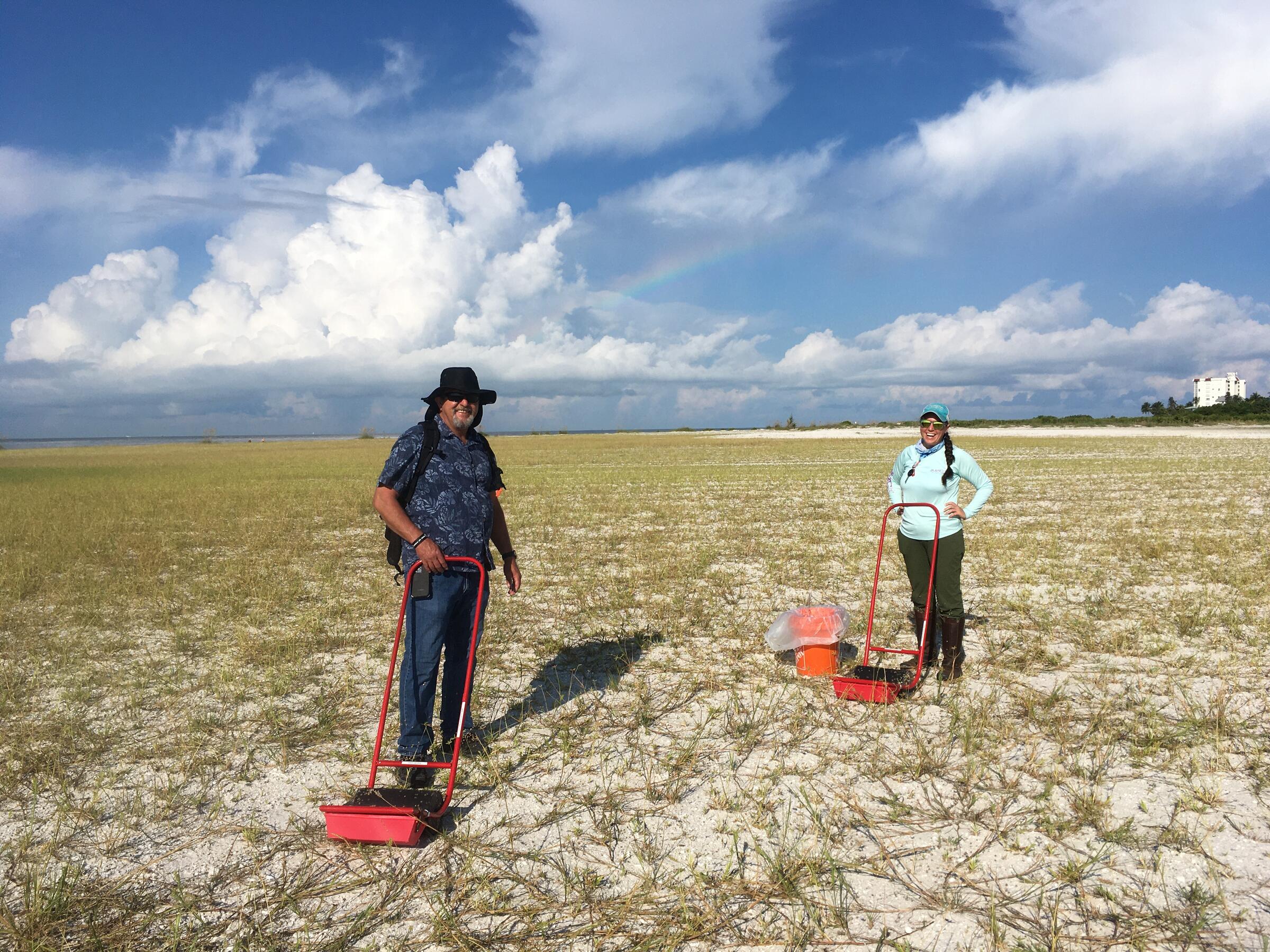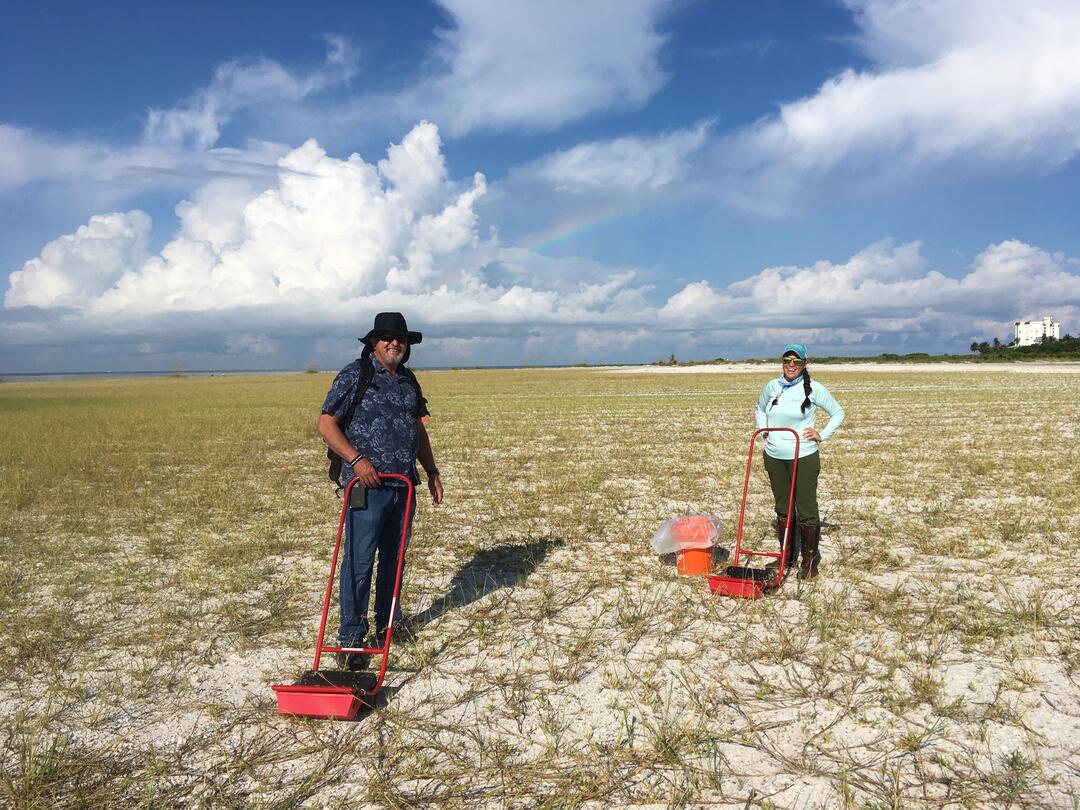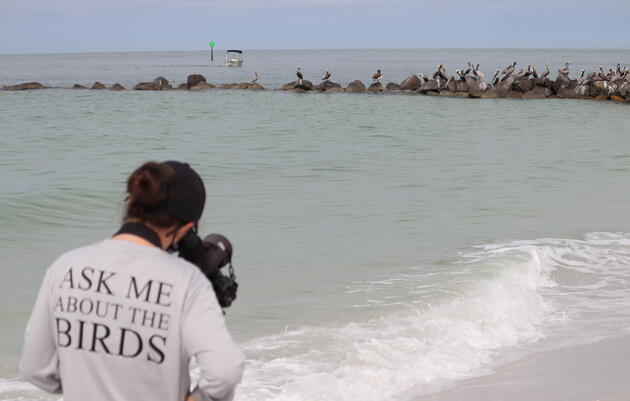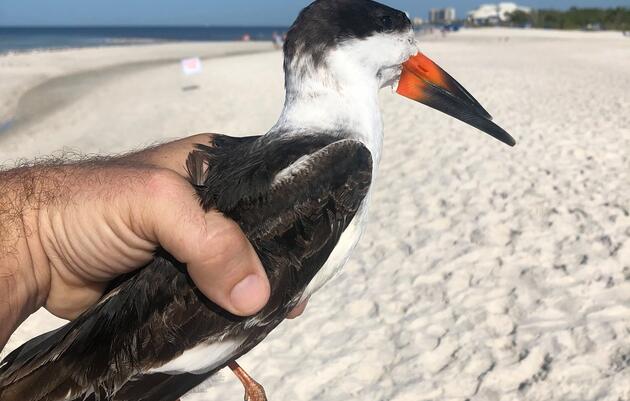On summer mornings, Audubon Florida coastal staff and volunteers are busy. They arrive early on the beaches with a spotting scope, educational materials, and extra string and flagging in case the posted area around a nesting site needs maintenance. They pick up trash and set up information stations to talk to beach visitors about the dangers of litter. They also explain why dogs are not allowed on the beach or must be leashed per local ordinances.
Despite these best efforts to protect birds nesting on Florida beaches, an invisible threat is taking a toll on Black Skimmer chicks and fledglings in Southwest Florida. Audubon and partners have been working together to determine the cause and identify potential solutions to a mysterious disease.
Over the past few years, Audubon staff recorded Black Skimmer chicks at the Marco Island and Fort Myers Beach colonies exhibiting swollen and infected joints caused by septic arthritis or septicemia. Septicemia is a bacterial infection in the blood that causes irreparable damage to internal organs and seems to be causing the death of many young birds.
The Problem
Audubon, together with the Florida Fish & Wildlife Conservation Commission (FWC), Rookery Bay National Estuarine Research Reserve, and other partners, have been investigating potential environmental conditions and bacterial sources contributing to Black Skimmer chick mortality as part of a research project funded by the Fish and Wildlife Foundation of Florida. One possibility that researchers are exploring is that wounds caused by the prickly seeds of coastal sandbur (Cenchrus spp.) may provide an entryway for bacterial infection.
Sandbur is a plant that is native to Florida and other states with sandy soils. This low-growing grass wields a stiff stem of spiky seedpods that stick to animals (or people) passing through and drop off later, as a way for the plant to spread to other locations. These plants are readily found across beaches in Florida where beachgoers often only notice them when the spiny seedpod latches onto bare feet.
It turns out, they also stick to bird legs.
Because sandbur is a native dune plant that plays an important role in stabilizing coastal habitats and building dunes and beaches, removing it completely is not an option. Audubon and partners have experimented with ways to reduce the number of sandbur seeds in Black Skimmer nesting habitat for years.
None of their efforts were very successful, efficient, or safe for the biologists and volunteers who had to handle the spiny seeds until the Stickerburr Roller was discovered.
An Innovative Solution
Sandbur is similar to the goat head burr (Tribulus terrestris) plant that is native to southern Europe, but a common invasive in agricultural and residential areas in the Western U.S. Stacy Stubbs, a Utah resident, was fed up with the burrs that stuck to his feet, pets, and even migrated inside to his carpets, and spent five years perfecting his invention, the Stickerburr Roller. Audubon coastal staff members spotted the invention in a social media video and realized its amazing potential to remove sandbur seeds from parts of the Black Skimmer nesting area, while not harming the plants or native vegetation communities. When the roller moves over the plants, the seedpods get stuck in the mesh and are then collected in a bin for easy disposal elsewhere.
Rochelle Streker, Audubon Florida’s Southwest Florida Shorebird Manager, reached out to Stubbs, who was overjoyed to learn that his invention could possibly help biologists understand and manage Black Skimmer mortality. He flew to Florida to learn more about the issue and even donated Stickerburr Rollers for the cause.
Streker and her volunteers eagerly tested the Stickerburr Rollers during the 2022 nesting season. Streker said the roller collected sandspur seeds quickly and she and the volunteers did not get sandbur seeds stuck in their hands with this new tool. Stubbs didn’t stop there. In 2023, he realized that excess screen material from his product can easily be repurposed and shaped into sleeves that staff and volunteers can pull up over their pants to make seedpod removal from their pantlegs much safer and easier.
More Research is Needed
While sandbur is widely distributed around the state and has been present where these birds have nested for many years, these infections have not been reported at skimmer nesting colonies in other parts of the state. If research shows a link between sandbur seeds and illness in Black Skimmers, the next step will be to understand what unique characteristics of these sites make them a problem for Black Skimmers in Florida. We hope to find these answers in the coming year.
Why This Matters
The challenges that birds face are complex. Sea level rise, our changing climate, algal blooms, and increased coastal development threaten their resilience. However, humans interrupting natural dynamic processes and habitat succession on beaches has complex and difficult-to-predict consequences for wildlife. Through a combination of innovative strategies and continued beach education, Audubon hopes to bolster their numbers, creating a brighter future for this iconic Florida species.
Are you interested in helping coastal bird species? Click here to volunteer on the beaches this summer.
